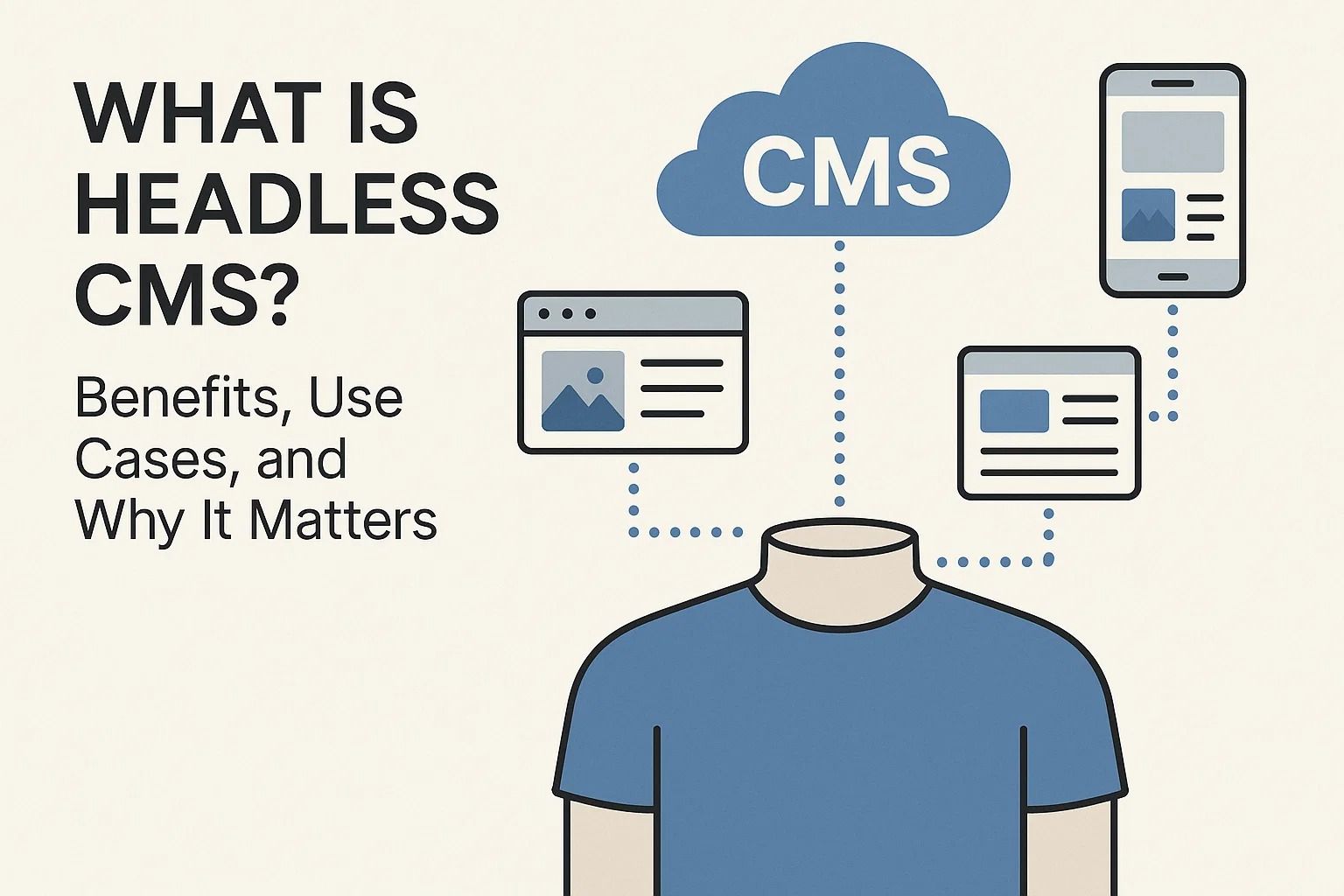
What Is Headless CMS? Benefits, Use Cases, and Why It Matters
Headless CMS Overview: A New Way of Working
In today's fast-paced digital landscape, the strategies businesses employ to create and distribute content are changing rapidly. A Headless CMS is a content management solution where the backend is separated from the frontend, meaning that the process of managing and storing the actual content is separated from the display or presentation layer. Unlike conventional content management systems such as WordPress or Joomla, which offer a one-stop-shop experience, a headless system provides the content via APIs, enabling developers to present it in multiple settings, including websites, applications, smart gadgets, and even IoT applications.
Implementing a Headless CMS
In a typical CMS setup, the database containing the content, the backend logic that processes this content, and the frontend themes that render the content are all within an interconnected singular system. As a result, such a system is restrictive in flexibility and often forces organizations into a specific ecosystem. A headless CMS, on the other hand, decouples this interlocked model, introducing:
- Backend: It is a database in which content is stored and organized in a structured manner.
- API Layer: It provides content through RESTful or GraphQL APIs.
- Frontend: Developers can choose any framework they like (React, Vue, Angular, etc.) to present the content.
This decoupling architecture coupled with APIs makes a headless CMS particularly beneficial for organizations managing content that spans multiple digital touchpoints.
If you are interested to learn how hosting choices can influence modern development, check out the article on best cloud hosting platforms for scalable projects.
The Benefits of a Headless CMS
Companies and developers are adopting headless CMS platforms for their flexibility, scalability, and speed. Here are the key benefits:
Omnichannel Delivery
With APIs at the heart of it, you can send content to websites, apps, wearables, voice assistants, and even IoT from a single content hub.
Developer Freedom
Frontend teams can use any framework or technology stack such as React, Vue, or Angular, without the constraints of the CMS backend’s calling.
Scalability
As a cloud service, headless CMS solutions automatically scale according to traffic growth, making them perfect for global projects.
Security
With the backend decoupled from the presentation layer, headless systems minimize the attack surface as opposed to a traditional monolithic CMS.
Popular Headless CMS Platforms
| Platform | Best for | Features |
|---|---|---|
| Contentful | Enterprise projects | Powerful APIs, cloud hosting, integrations |
| Strapi | Open-source flexibility | Self-hosted, customizable, developer-first |
| Sanity | Content-rich sites | Real-time collaboration, structured content |
| Ghost (Headless Mode) | Publishing & Blogs | Lightweight, API-based, Markdown-friendly |
Compared to the traditional CMS model, these platforms prioritize performance and flexibility while facilitating integration with other new technologies.
For further reading, check out our article on productivity tools to help teams organize workflows alongside a headless CMS.
Headless CMS Use Cases
A headless CMS isn’t just for the big players; it’s ideal for companies of any size. Here’s where it makes the biggest impact:
- eCommerce: Fuel product catalogs everywhere, from webshops and mobile apps to in-store displays in tandem.
- Media & Publishing: Distribute articles, videos, and podcasts across websites, apps, and smart devices.
- SaaS Platforms: Take control of knowledge bases, product manuals, and other dynamic page elements with ease.
- Startups: Rapidly deploy MVPs levels using an easy-to-use CMS, fully integrated with modern frameworks.
- Corporate Websites: Brand consistently and serve local content with grace and ease across the globe.
Headless CMS is rapidly gaining momentum. By 2025, it’s predicted to be the default choice for companies needing dynamic content for omnichannel delivery, coupled with a swift and flexible developer experience.
Summary
The best headless CMS provides businesses with the power and scalability needed in the multi-channel landscape through speed and flexibility without technical limits. Whether you’re focusing on an eCommerce shop, a SaaS product, or a media platform, a headless system supports your content strategy along with your company’s growth.
To explore further about how your backend choices shape your digital identity, read our blog on the results of the impact of blockchain on tech business .

















